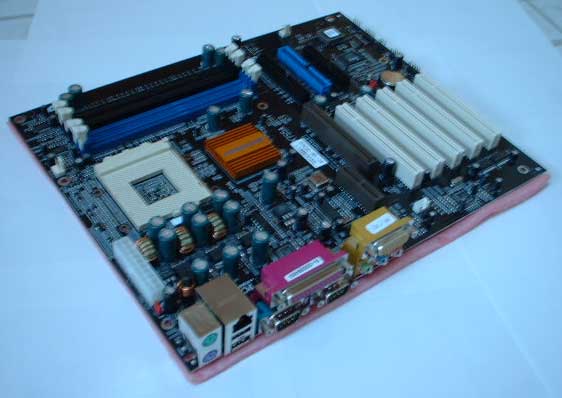 |
|
|
|
In the Forums... |
Posted: October 1st, 2001 Written by: Tuan Huynh ECS K7S5A (DDR)  A few months ago SIS started sending out reference boards equipped with their 735S chipset. When benchmarks on the chipset started popping up, users were amazed by the performance of the chipset. SIS wasnít known to be a major player in the chipset market, and due to this they took the world by storm. But one problem with the 735S was industry support. Sure the chipset was a great performer, but big named manufacturers failed to adopt the chipset. Elite Computer Systems saw this problem and rushed to the market with a board based on SISí 735 chipset. The decision ECS made was a risky decision, but a worthwhile decision. In the end, ECS delivered the first 735S motherboard to the market at a very cheap price. The SIS735 board from ECS was dubbed the K7S5A. The K7S5A is built upon a beautiful black PCB, and includes 1AGP, 5PCI, and 1AMR slot. Strange that ECS chose to go with AMR since itís a dying standard and is being replaced by CNR and ACR. The PSU connector is placed perfectly at the edge of the motherboard and doesnít get in the way of the CPU HSF. Since the 735 chipset itself doesnít dissipate much heat, only a heatsink is needed to keep the chipset cool. You may notice that there are 2 colors for the memory slots; there is an explanation for this. The SIS735 is a SDR and DDR capable chipset. ECS decided to offer support for both memory types thus we are greeted with 2 184 Pin DIMM and 2 168 Pin DIMM slots. The blue memory slots are for DDR memory while the black slots are for SDR memory. The memory slots are placed very closely to the CPU socket; if you wanted to replace the CPU HSF youíll have to take out the memory first. One gripe I had with the memory slots, were the cheapness of them. Taking out the ram involved me pushing the clips down and literally pulling out the ram. The ram clips didnít help at all during removal of the memory, and also felt really cheap. I was able to accidentally pull out one of the clips while attempting to fix it. It seems that ECS had to cut some corners to get the board to be so cheaply priced. The manual that is included with the K7S5A is plain and offers only simple explanations of features. ECS needs to work on the manual a bit since it doesnít explain much of the boardís features, or settings, and is nowhere near the likes of Asus and Abit. The driver CD includes the SIS drivers, but the auto run wouldnít initialize in Windows 2000. The AGP driver for Windows 2000 wasnít included either, so it had to be downloaded off of SISís website. BIOS Very much like the Biostar BIOS, ECS gives you the options to change the ram timings to get the most performance out of your system. As for overclocking options, ECS offers limited bus frequency adjustments such as 112, 124, 138, 150, and 166 MHz. There are no voltage adjustments at all on the ECS board, so overclockers should look at other boards. |
||
|
| |||
|---|---|---|---|